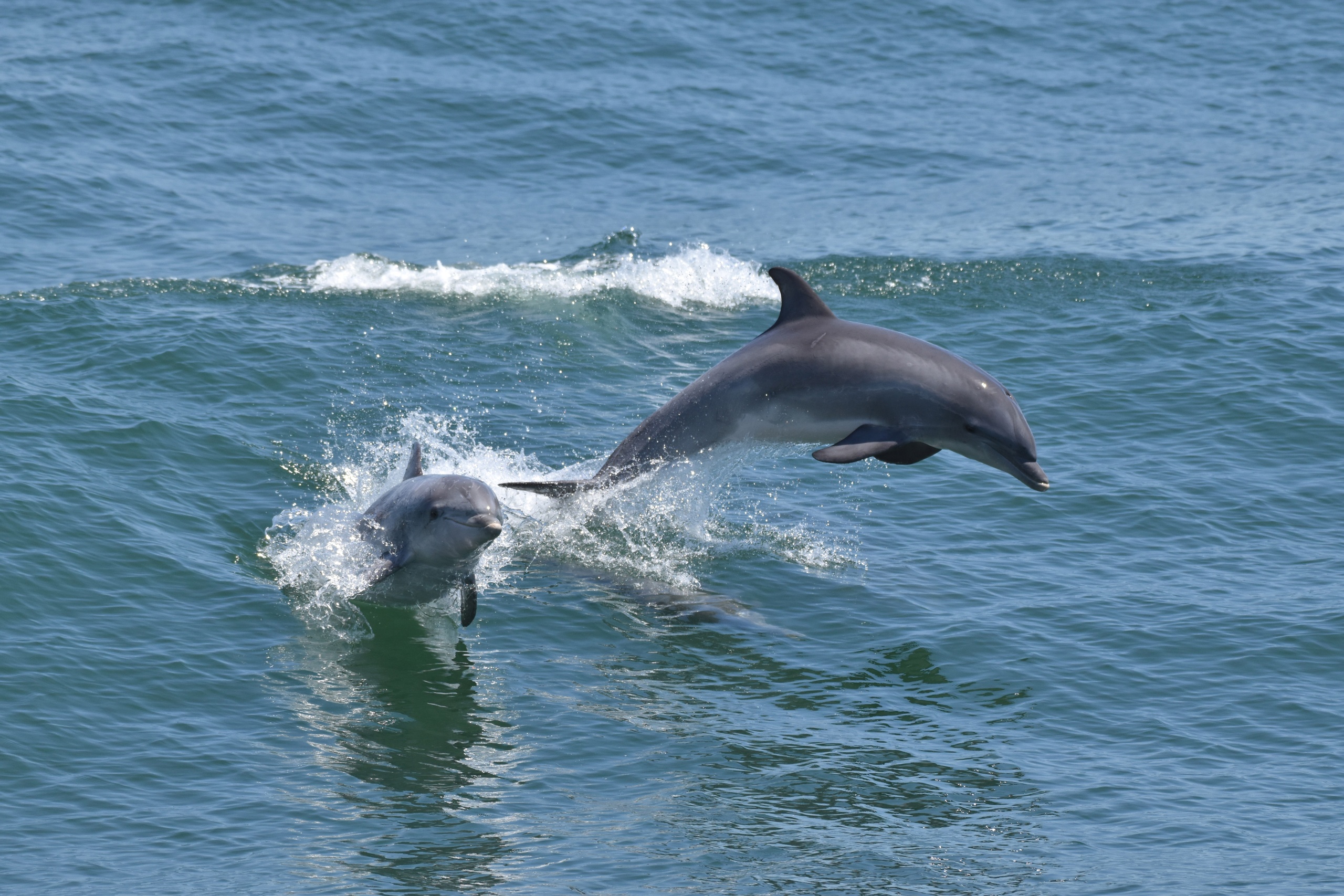Share The Shores
Cape May is known for its gorgeous shorelines, beautiful Victorian architecture, and interesting history. Its no wonder that the summer months draw 40,000 to 50,000 visitors annually with a steady increase every year (Barlow 2019). While this is good news for the local economy and to the thousands of visitors who choose to vacation in Cape May, this excess foot traffic can be problematic for migrating shorebirds who nest on the coastlines.

Shorebirds are some of the most migratory animals known to science today, and the habitats they utilize for nesting and feeding are extremely important to maintaining a healthy weight while migrating and for successfully raising chicks. Many of these vulnerable shorebirds have seen declines since the 1970s. Factors affecting these birds include degradation of their wintering or staging grounds through development, human disturbance, pesticide use, pollution, and oil spills (Pfister et al. 1991). Pressures affecting nesting birds often lead to lower nest success and may include predators, flooding, human disturbance, and urban development (Maslo et al. 2016).
Humans impact nesting birds in many ways. Human influences include, predation by introduced predators, habitat quantity and quality being diminished, and direct disturbance or destruction of nests accidentally or intentionally (Maslo, et al. 2018). Specifically, many common beach activities can have a strong impact on nest success. Many eggs are very small and are camouflaged to match the surrounding sand. This can make them difficult to see and vulnerable to being stepped on by beach goers, or destroyed by vehicles. Unleashed dogs can also scare adult birds, destroy nests, or harm young chicks. Human presence can also cause birds to flee making nests vulnerable to predation, or enough disturbance can cause adults to abandon their nests all together (Spratt 2015).

In Cape May and the rest of New Jersey, the beach-nesting birds of highest concern are the American Oystercatcher (emotopus palliates), Black Skimmer (Rynchops niger), Least Tern (Sterna antillarum), and Piping Plover (Charadrius melodus). Terns and skimmers are colony nesters meaning that they will nest in large groups. These species will also feed their young, and chicks will rarely venture beyond the colony. Piping Plovers are unique because their chicks will be mobile and able to feed themselves within hours of hatching. The chicks will not be confined to a particular area, and will still be vulnerable to predation and disturbance prior to fledging. American Oystercatcher chicks are still dependent on their parents for food, and they also don’t remain in the nest-site prior to fledging. In Cape May and other parts of New Jersey, the most common conservation technique used to protect these species is by closing off sections of the beach front for nesting birds (Maslo 2018).


Coastal birds contribute greatly to the beach and dune ecosystems by transferring nutrients between marine and terrestrial habitats and by acting as an important predator in the food chain (Maslo 2016). Therefore, preserving these species is important to both maintaining biodiversity, but also to maintaining the health of our shoreline. That being said, it is important to be a mindful beach-goer by respecting restricted areas, staying on designated trails, keeping pets leashed, and being observant while enjoying the coast this summer!

-Zoe Korpi, Intern at Cape May Whale Watch and Research Center
The Pennsylvania State University
Literature Cited
American Oystercatcher [Online Image]. (2017). Retrieved July 15, 2019 from https://commons.wikimedia.org/wiki/File:American_oystercatcher_-_Cape_May,_NJ.jpg
Area in Cape Henlopen State Park where endagered birds nest [Online Image]. (2013). Retrieved July 15, 2019 from https://commons.wikimedia.org/wiki/File:Endangered_Birds_Nesting.JPG
Barlow, B. (2019). Cape May County expects steady tourism growth in 2019. Retrieved from https://www.pressofatlanticcity.com/news/breaking/cape-may-county-expects-steady-tourism-growth-in/article_01f46aa2-880b-5fa0-9372-6c750b08269c.html
Brown, P. R. Sandy Point- Least Terns [Online Image]. (2011). Retrieved July 15, 2019 from http://birdsofessex.blogspot.com/2011/08/sandy-point-least-terns-august-04-2011.htmlPiping Plover (male) [Online Image]. (2008). Retrieved July 15, 2019 from https://commons.wikimedia.org/wiki/File:Charadrius-melodus-001.jpg
Maslo, B. Leu, K., Pover, T., Weston, M. A., and Schlacher, T. A. 2018. Managing birds of conservation concern on sandy shores: How much room for future conservation action is there? Ecology and Evolution 8: 10976-10988.
Maslo, B., Schacher, T. A., Weston, M. A., Huijbers, C. M., Anderson, C., Gilby, B. L., Olds, A. D., Connolly, R. M., and Schoeman, D. S. 2016. Regional drivers of clutch loss reveal important trade-offs for beach-nesting birds. PeerJ: 1-23.
Pfister, C., Harrington, B. A., and Lavine, M. 1992. The impact of human disturbance on shorebirds at a migration staging area. Biological Conservation 60: 115-126.
Spratt, A. (2015). Nesting season begins for threatened and endangered shorebirds along California coast.
Trepte, A. Black Skimmer Rynchops niger [Online Image]. (2015). Retrieved July 15, 2019 from https://en.wikipedia.org/wiki/Black_skimmer#/media/File:Black_skimmer_Rynchops_niger.jpg
U.S. Fish & Wildlife Service. (2019). Piping plover fact sheet. Retrieved from https://www.fws.gov/midwest/endangered/pipingplover/pipingpl.html
